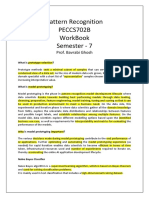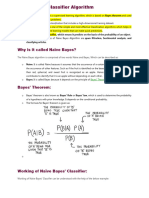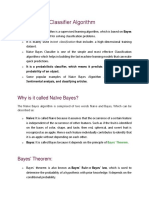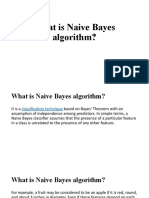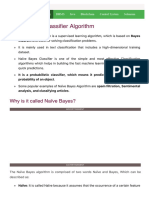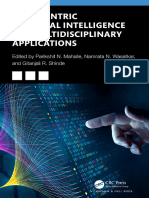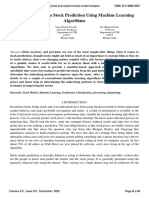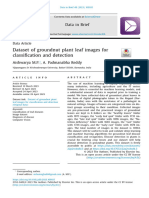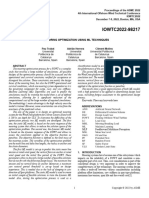0% found this document useful (0 votes)
31 views10 pagesWhat Is Naive Bayes Algorithm
The Naive Bayes algorithm is a classification technique based on Bayes' Theorem, assuming independence among predictors, which makes it particularly effective for large datasets and text classification tasks. It calculates the posterior probability of a class based on prior probabilities and likelihoods, and is widely used in applications such as spam filtering and sentiment analysis. Despite its simplicity and speed, Naive Bayes has limitations due to its assumption of feature independence.
Uploaded by
lakshmidharshan.30Copyright
© © All Rights Reserved
We take content rights seriously. If you suspect this is your content, claim it here.
Available Formats
Download as DOCX, PDF, TXT or read online on Scribd
0% found this document useful (0 votes)
31 views10 pagesWhat Is Naive Bayes Algorithm
The Naive Bayes algorithm is a classification technique based on Bayes' Theorem, assuming independence among predictors, which makes it particularly effective for large datasets and text classification tasks. It calculates the posterior probability of a class based on prior probabilities and likelihoods, and is widely used in applications such as spam filtering and sentiment analysis. Despite its simplicity and speed, Naive Bayes has limitations due to its assumption of feature independence.
Uploaded by
lakshmidharshan.30Copyright
© © All Rights Reserved
We take content rights seriously. If you suspect this is your content, claim it here.
Available Formats
Download as DOCX, PDF, TXT or read online on Scribd
/ 10


